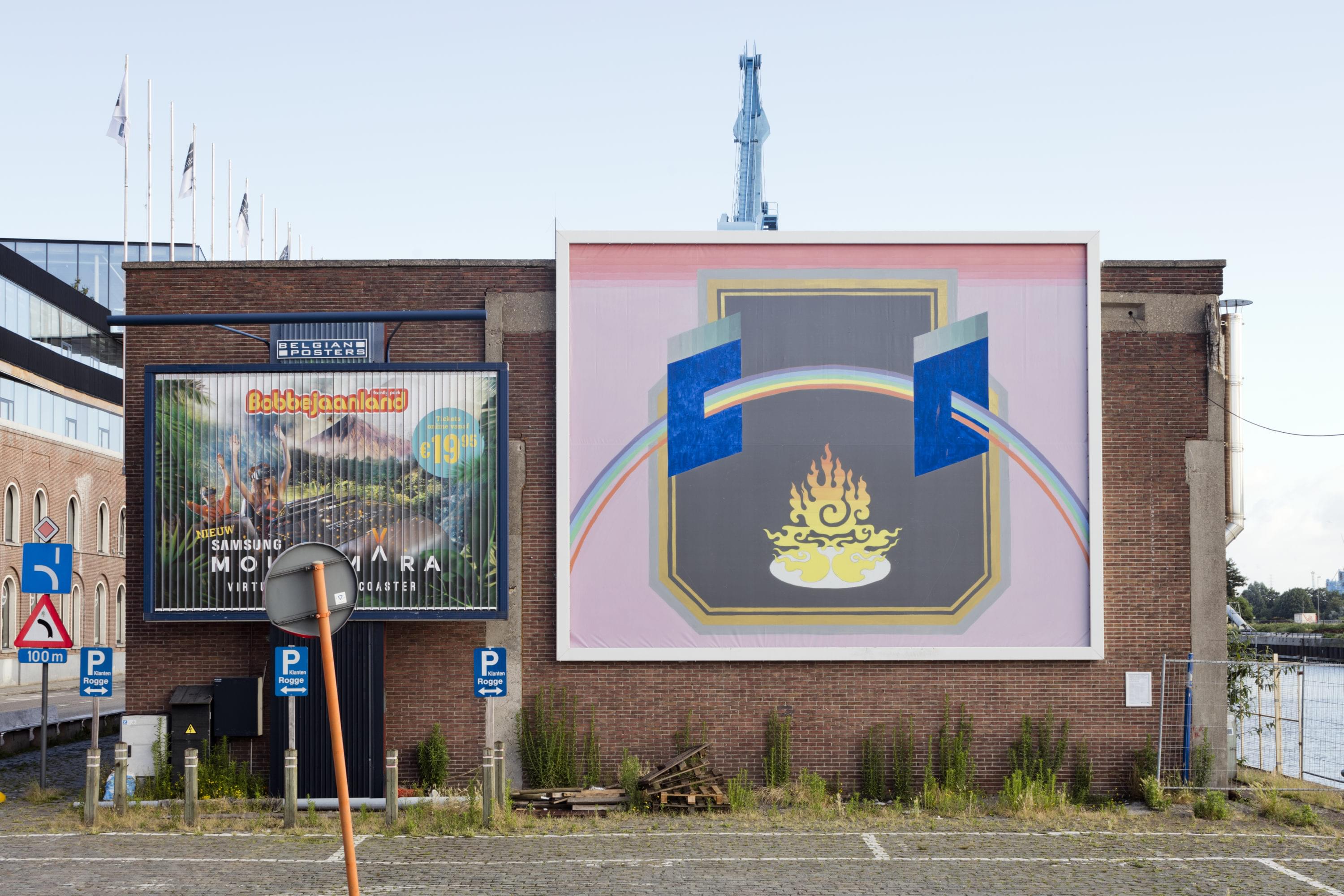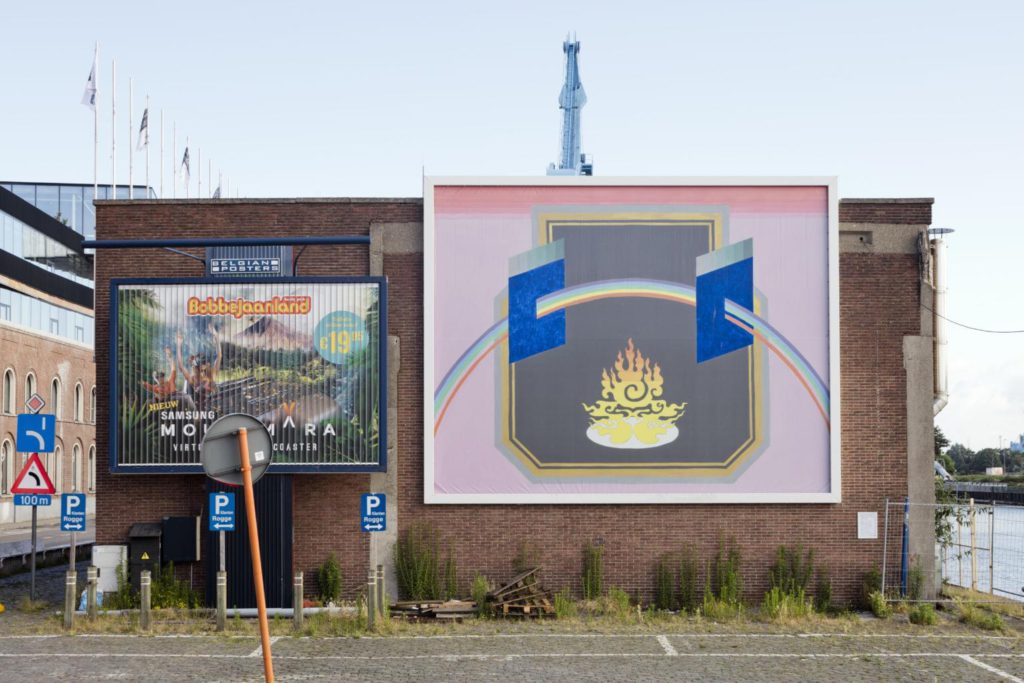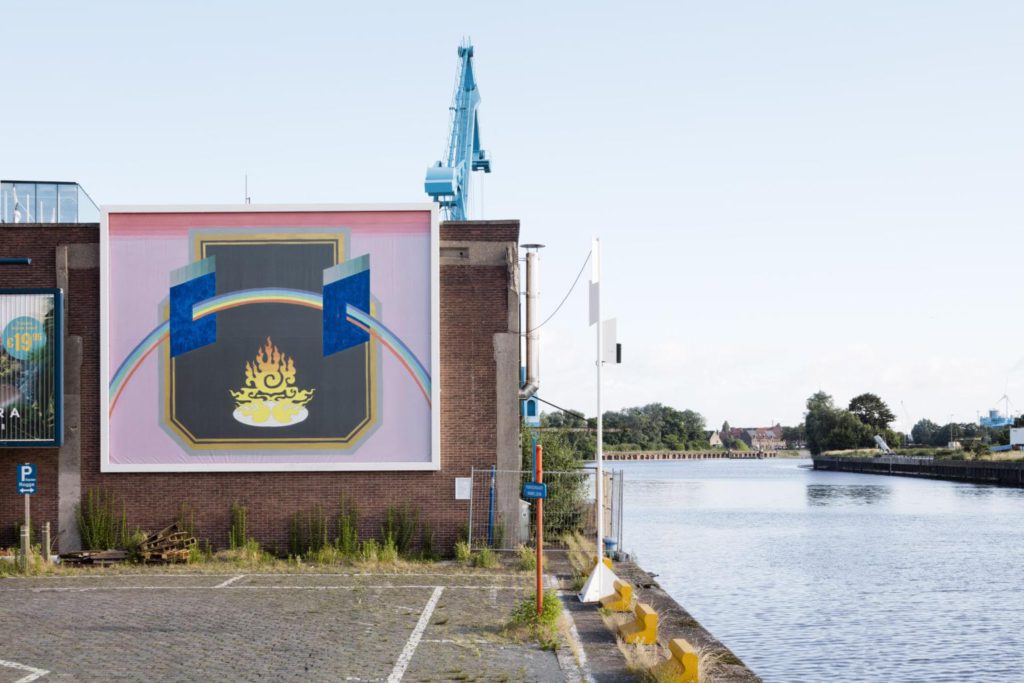Kasper Bosmans: Smalt Cobalt Filter
Billboard Series #03
06/05/2016 – 12/08/2016

Kasper Bosmans (°1990, Lommel) dives deeply into the rich cultural history of materials, objects, traditions and customs. The references in his work betray a broad spectrum of sources, from folkloristic stories and cultural practices to historic research on painterly techniques or botanical cross-breeding. He continuously expands on his interests, subjecting them to careful scrutiny. Legends is a series in which this affluence of references is clearly visible. The title refers to both a story of the past, as well as a brief explanatory text.
Billboard Series deals with change and transformation. These ideas are present in Bosmans’ new Legend, entitled Smalt (Cobalt Filter and Cream). This is the first Legend to be created and presented on such a large scale.
The starting point of Bosmans’ research for this work is smalt, a pigment made of ground cobalt blue glass. Smalt was a commonly used pigment in European painting from the 15th to the 17th century. Pieter Paul Rubens used it, as did Antoon Van Dyck. The vibrant blue hues of the pigment however discolor to grey over a period of a century.
In this work by Bosmans, the actual subject of research (the smalt blue) is physically integrated in the work. Bosmans painted two surfaces on the billboard with a mixture of smalt and an acrylic medium, playing on its transformation over time. Though the blue hues inevitably will fade, no one will ever see the colors change – as the time the work is presented is only a few months.
Science, culture and history really come together in this work. Because smalt is basically finely ground blue glass, there are also quite some references to the history and use of this specific material. Since the 18th century, a lot of the cobalt blue glass has been produced in Bristol, England – hence it’s also dubbed ‘Bristol Blue’. The geometric background of Kasper’s legend is based on the label of Bristol Cream, a Sherry that comes in a typical Bristol blue bottle.
The hand-painted cobalt filters and the flame on the work refer to the scientific use of cobalt in flame tests. This procedure is used to detect the presence of certain elements, primarily metal ions, based on each element’s characteristic color emission spectrum. Cobalt filters are used to block out yellow light in these tests, as the yellow sodium flame shines so bright it makes any other element invisible. The image of the flame also refers to ancient Eastern cultures. Culturally speaking, smalt was used for the first time by the Chinese Tang Dynasty in the 7th century to glaze their ceramics.
By combining all these references and compiling the different elements from his field of study – in this case around smalt – into a new visual narrative, Kasper Bosmans creates a highly poetic visual mythology opening up the possible meanings all individual elements might have.
The work of Kasper Bosmans has been shown internationally, including at S.M.A.K., Ghent; CIAP, Hasselt; Pakt, Amsterdam; Muzee, Oostende; Wiels, Brussels, Spring Workshop, Hong Kong; and Kunstmuseum Stavanger. Upcoming solo exhibitions include S.M.A.K., Ghent; Witte de With, Rotterdam; and De Hallen, Haarlem. Kasper Bosmans is represented by Marc Foxx Gallery, Los Angeles.
Curated by artlead / Thomas Caron
In collaboration with All Things Contemporary
Installation photography: Michiel De Cleene
Billboard Series is a long-term art project in public space, for which every three months an artist is invited to create a new, site-specific work for a 50 m2 billboard on Dok Noord, Ghent. Through changing presentations, Billboard Series wants to build a sustainable and productive dialogue with the surrounding neighbourhood and urban landscape, reflect on the changes that this neighbourhood is currently undergoing, and introduce a broad audience to different visual languages and ways of looking at the world.
Billboard Series is a project of artlead, together with the non-profit organizations artlead offline and 019. Billboard Series takes place within a scenography by architect Olivier Goethals, and is being developed with the support of the City of Ghent and the Flemish Community.


